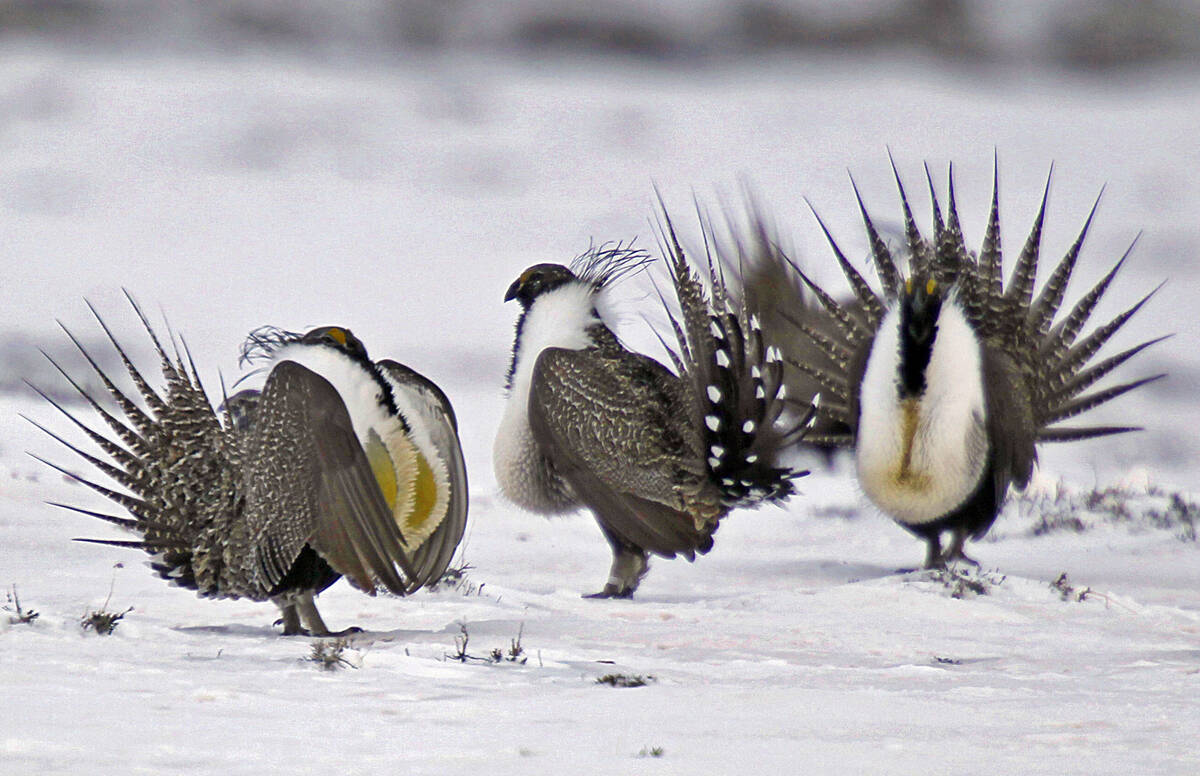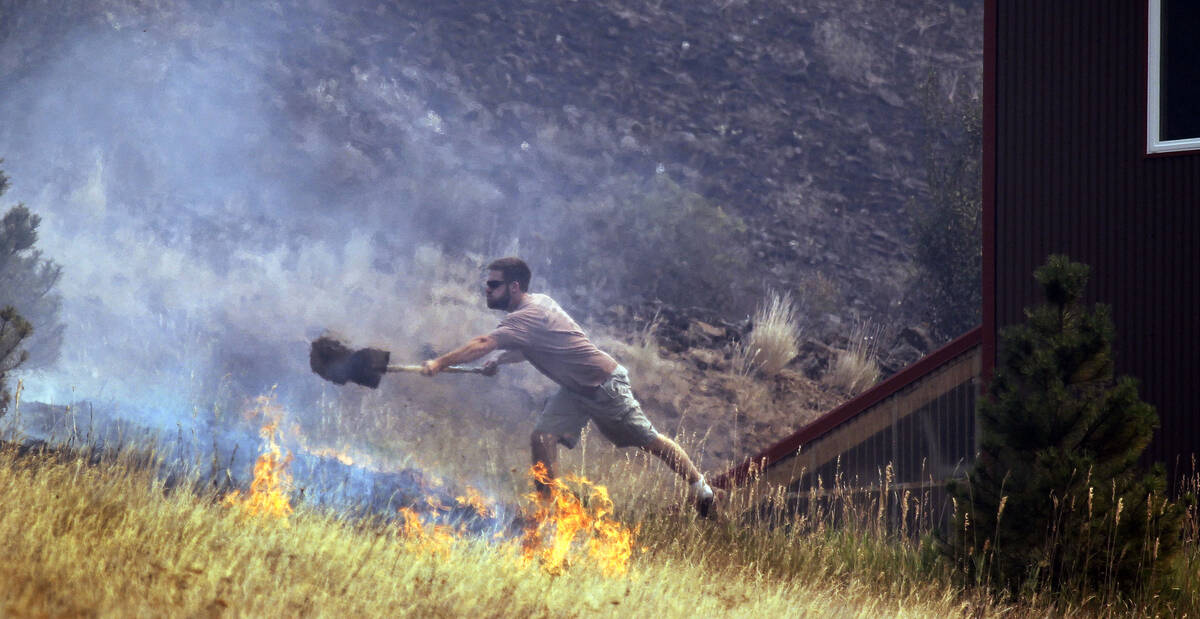Biden administration may reverse Trump rules on western sage grouse
BILLINGS, Mont. — The Biden administration said Friday that it will consider new measures to protect the greater sage grouse, a bird species once found across much of the U.S. West that has suffered drastic declines in recent decades due to oil and gas drilling, grazing, wildfires and other pressures.
The announcement of a range-wide evaluation of habitat plans for greater sage grouse came after the Trump administration tried to scale back conservation efforts adopted when Biden was vice president in 2015.
A federal court blocked Trump’s changes. But Biden administration officials said the attempt set back conservation efforts — even as the chicken-sized bird’s habitat was further ravaged by wildfires, invasive plant species and continued development.
Industry groups have resisted further restrictions, such as wide buffers around the bird’s habitat where drilling would be prohibited. Biologists have said those buffers are needed to protect sage grouse breeding areas where the birds engage in elaborate annual mating rituals.
Some environmentalists insisted that the 2015 plans didn’t go far enough because of loopholes that allowed grazing and drilling on land that sage grouse need.
Bureau of Land Management Deputy Director Nada Culver said “everything’s on the table” as the agency launches its evaluation of sage grouse habitat, with no set deadlines for action.
“From changes to the buffers, to how we manage energy development, to how we manage every other activity … we are evaluating it and we are looking for input on what are the most important things to look at,” Culver said.
Officials also will look at how climate change is adding to pressures on the sage grouse. Culver pointed to data showing wildfires burned almost 10,700 square miles of the bird’s habitat since 2016. The vast majority of those fires were on federal lands.
Greater sage grouse once numbered in the millions across all or portions of 11 Western states. Scientists with the U.S. Geological Survey said earlier this year that their numbers are down 65 percent since 1986.
In 2010, U.S. wildlife officials said drastic habitat losses meant protections for sage grouse had become warranted for under the Endangered Species Act. However, the U.S. Fish and Wildlife Service did not take any action at the time, saying other species took priority.
In 2015, the U.S. Fish and Wildlife Service determined protections were no longer needed after other federal agencies and states adopted sweeping land management plans meant to halt or reverse the species’ decline. The plans were billed as a compromise, but some were quickly unraveled after Trump took office in 2017 and states sought changes to the documents that critics said would hurt grouse.



















